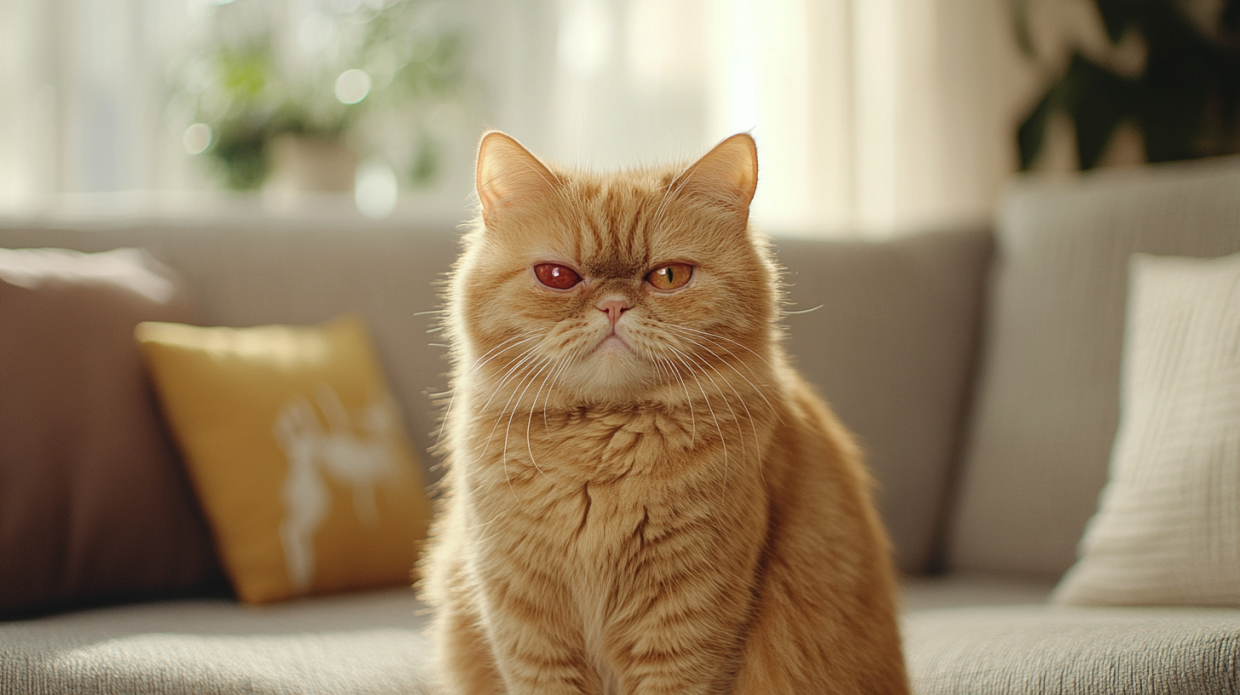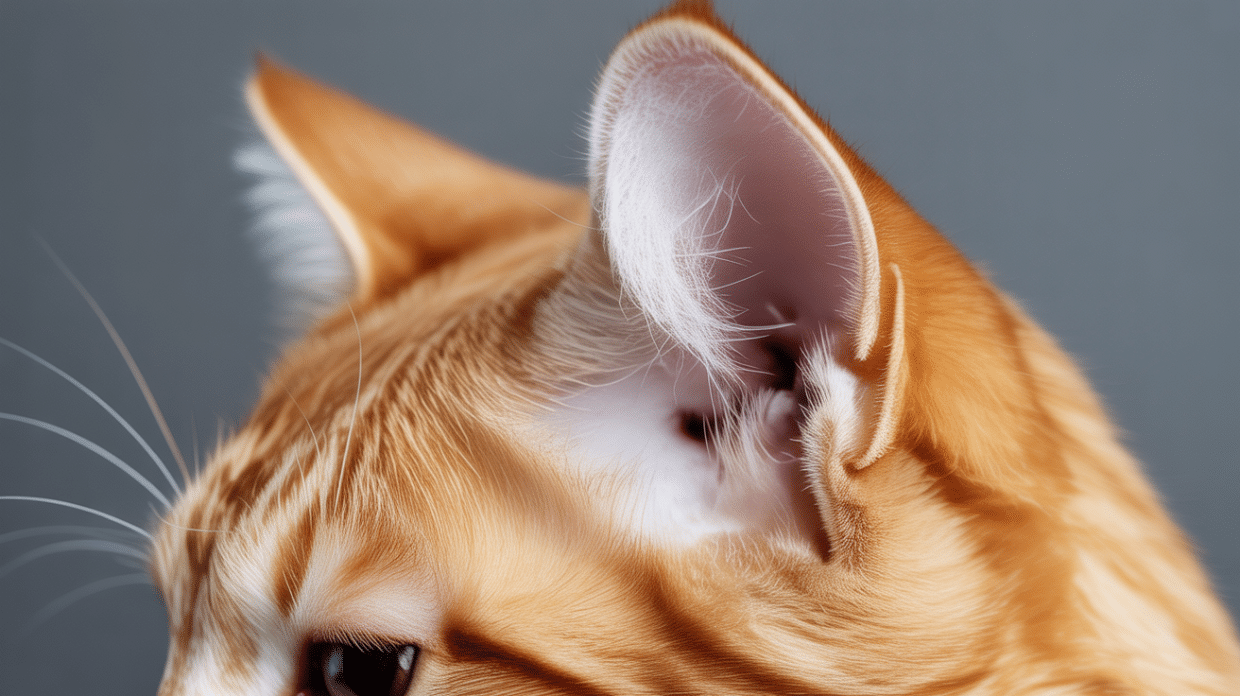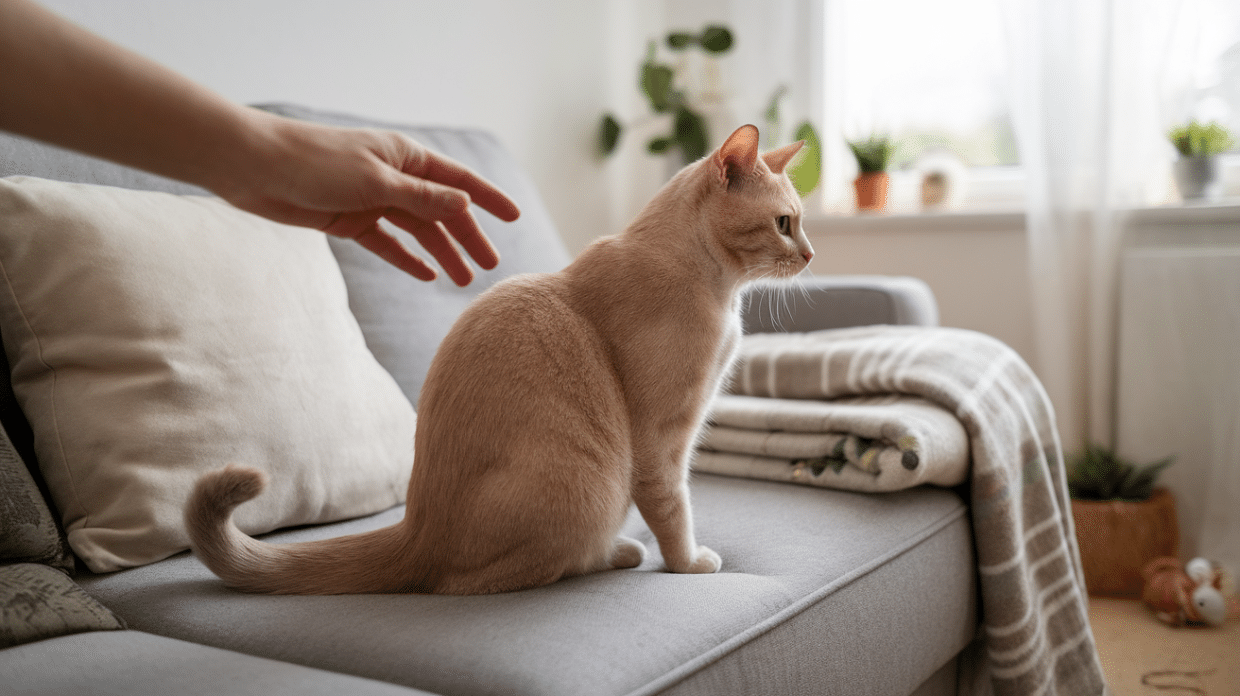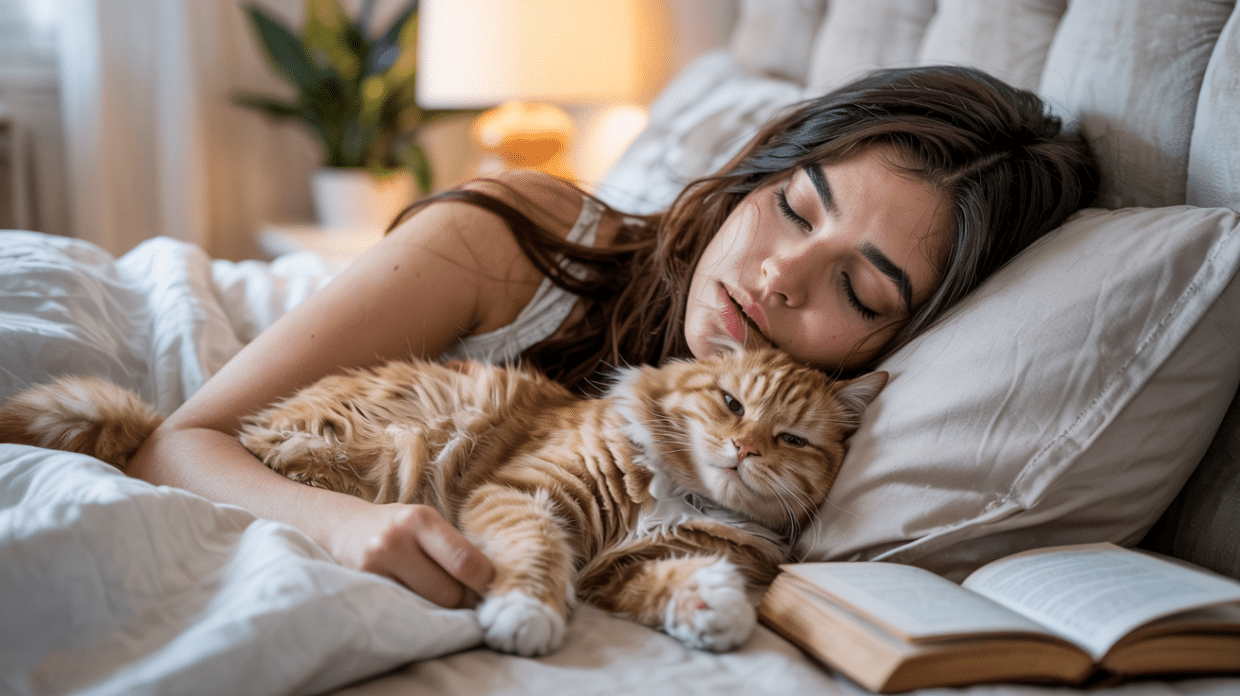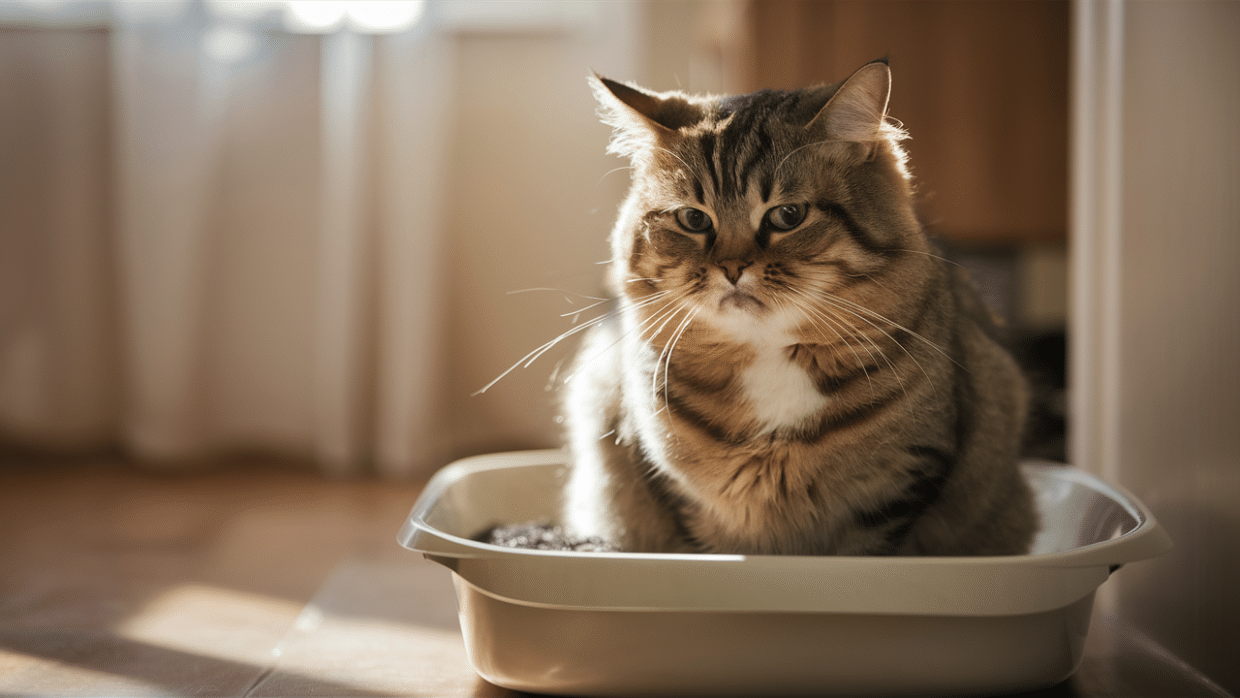Has your cat ever given you that alarmed look with red, irritated eyes? It’s hard not to worry when you notice those normally clear eyes looking sore or angry.
This guide breaks down everything about cat eye redness – from spotting the first signs to knowing when to rush to the vet. You’ll learn what different symptoms mean, common causes, both mild and serious, and practical steps you can take at home.
By the end, you’ll feel more confident handling eye problems and know exactly when professional help is needed.
Your cat counts on you to notice when something’s wrong – let’s make sure you know what to do.
What Red Eyes in Cats Can Mean
Red eyes in cats often signal that something’s wrong. This common symptom can range from minor issues to serious health problems.
Understanding what causes red eyes can help you know when to call your vet.
Is it One Eye or Both?
The number of eyes affected can tell you a lot about what might be wrong with your cat.
One Eye Might Mean Injury: When only one eye is red, your cat may have gotten hurt. Maybe a scratch from another pet, dust, or a small object got in their eye. Check for any signs of damage and look for anything stuck in or around the eye.
Both Eyes Often Point to Infections: Red eyes in both eyes usually mean your cat has an infection or allergy. Viral infections like cat flu can make both eyes red and watery. Allergies to pollen, dust, or even their food can also make both eyes red and itchy.
Can Your Cat Open its Eye?
How your cat responds to their eye problem can help you decide how serious it is.
If Not, It’s More Serious: A cat that can’t or won’t open their eye is likely in pain. This could mean they have a deep scratch on their eye, high pressure inside the eye, or a bad infection. Don’t wait to get help if you see this happening.
Inability to Open the Eye Means Urgent Vet Attention: When your cat keeps an eye shut, call your vet right away. Problems like eye ulcers or glaucoma can cause blindness if not treated quickly. Your vet has the right tools to check what’s wrong and start treatment.
Signs to Watch For
Not all red eyes are the same in cats. Noticing exactly what looks wrong can help you figure out if it’s time for a vet visit or if you can keep an eye on things at home.
- Location of the redness: Where you see the red color in your cat’s eye gives clues about what might be happening.
- Red tissue may suggest Conjunctivitis: When the pink tissue around your cat’s eye looks angry and swollen, it’s often conjunctivitis. This is like pink eye in humans. Your cat might blink more or rub their face on furniture.
- Bloodshot whites could be temporary: Sometimes, just the white part of your cat’s eye gets red lines. This can happen from stress or minor irritation. If your cat seems fine otherwise, it might clear up on its own.
- A raised third eyelid can show discomfort: That extra eyelid in the corner of your cat’s eye shouldn’t be very visible. If it’s coming up and looks red, your cat is likely feeling sick or in pain.
Discharge Type and Color
What comes out of your cat’s eye tells an important story about what’s going on inside.
Yellow or Green: Likely Infection. Thick, colored goop in your cat’s eye usually means bacteria are causing trouble. This needs vet care, as it won’t clear up alone and can get worse fast.
Bloody: May Point to Trauma. If you see red in the tears or discharge, your cat might have hurt their eye. Check for scratches on their face, too. This needs quick vet help to prevent damage.
Thick vs. Watery Discharge: Runny, clear tears often mean allergies or a virus. Thick, sticky discharge typically indicates bacterial issues. Both can make your cat feel bad, but thick goop needs medicine more urgently.
Common Causes of Red Eyes in Cats
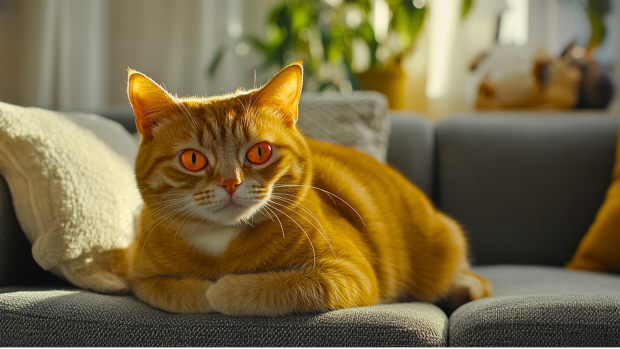
When your cat’s eyes look red and sore, several things might be to blame. Some are simple to fix, while others need more care. Let’s look at the most common reasons behind those red eyes.
Conjunctivitis
The most frequent reason for red eyes in our feline friends is simple inflammation of the eye tissues.Just like in humans, pink eye makes the white part of your cat’s eye turn red and puffy. It’s very common, and while uncomfortable, it’s usually not dangerous if treated quickly.
You might notice your cat blinking a lot or keeping one eye half-closed. The eye might look wet or have crusty stuff around it. Your cat might also rub their face on furniture or with their paws.
Cats catch pink eye from germs, just like we do. Sometimes it comes with a cold or flu. Other times, it’s just in the eye. Either way, your vet can help clear it up.
Injury or Trauma
Cats are curious and active, which sometimes leads to eye injuries.
Outdoor cats, especially, can get scratched by branches, other cats, or even their own claws. Indoor cats might run into things or get dust in their eyes. These small injuries can look very red.
If your cat hurts their eye, don’t wait to see if it gets better. Quick vet care can save their sight and stop infections. Even small scratches on the eye can cause big problems.
Infections
Germs love warm, wet places like eyes. Some eye infections come from cat colds. Others start right in the eye.
Both can make your cat’s eyes red, goopy, and uncomfortable. Your cat might sneeze or have a runny nose, too.
Eye infections rarely clear up on their own. Without medicine, they often get worse and can spread to both eyes or deeper into the eye. This can lead to lasting damage.
Chronic Illnesses
Sometimes red eyes point to bigger health issues.
When your cat’s immune system attacks its own body, the eyes can become red and painful. This deeper eye inflammation needs special treatment and careful monitoring.
Sadly, some types of cancer can show up in or around the eye. These cause redness, changes in the eye’s shape, or vision problems. Early vet care gives the best chance for good outcomes.
Less Common But Possible Causes
While most red eyes in cats have straightforward causes, some rarer issues might be behind your cat’s discomfort. Don’t rule these out, especially if the usual treatments aren’t helping.
Allergies
Just like humans, cats can have allergic reactions that affect their eyes.
Your cat’s eyes might get red and watery from things in your home or yard. Spring pollen, house dust, or even a curious sniff at a bee can cause eye redness.
You might notice your cat pawing at their face or sneezing along with the red eyes.
Irritants
Cats have sensitive noses and eyes that react to strong smells and chemicals.
The things that make our homes smell nice can make your cat’s eyes water and turn red. Their little faces are much closer to the floor, where these particles settle.
If you’ve recently changed cleaning products or lit a new candle, this could be why your cat’s eyes look sore.
Obstructions
Cats are low to the ground and love to stick their faces where they shouldn’t.
Your cat might have something stuck in their eye that you can’t easily see. A tiny grass seed or bit of dirt can cause major irritation.
If your cat suddenly has a red eye after being outside or in a dusty area, check for something stuck under their eyelid.
Glaucoma or Hyphema
Some serious eye conditions can cause redness along with other worrying signs.
This painful condition happens when fluid builds up in your cat’s eye. The pressure hurts and can cause blindness if not treated quickly. \
Your cat’s eye might look cloudy and swollen as well as red.
Hyphema: Bleeding in the Eye Chamber
If your cat’s eye looks red in an unusual way, they might have bleeding inside the eye itself.
This often happens after an injury and needs immediate vet care. You might see a red pool of blood visible inside the clear part of the eye.
Safe First Steps at Home
If your cat’s eyes look red but they’re still acting normally, you can try a few gentle home care steps before heading to the vet. These simple actions might help with minor irritations and make your kitty more comfortable.
- Use a soft washcloth with warm (not hot) water and gently hold it against your cat’s eye for a minute. This can soothe irritation and loosen any crusty bits.
- For cleaning around the eye, pet-safe wipes work well – just don’t touch the eyeball itself.
- Look around your home for things that might be bothering your cat’s eyes, like dusty areas or new air fresheners, and remove them if possible.
These small steps can provide relief while you decide if a vet visit is needed.
Treatment Options for Red Eye
When you take your cat to the vet for red eyes, they’ll choose treatments based on what’s causing the problem. The good news is that most eye issues respond well to the right care. Here’s what you might expect.
Cleaning the Eye
Often, the first step is to help your cat’s irritated eye feel better.
Your vet might start by cleaning your cat’s eye area. They’ll use special gauze or cotton with a solution that won’t hurt your cat. This removes crusty buildup that can make the problem worse.
You might need to continue this cleaning at home as part of the treatment.
Eye Drops and Ointments
Most eye problems are treated with medicine applied directly to the eye.
If bacteria are causing the redness, your vet will give you antibiotic drops. For swelling and pain, they might prescribe anti-inflammatory drops.
Your cat won’t love getting these, but they work quickly to reduce pain and redness.
Topical Meds are Most Common
Medicine that goes right on the eye works best for most problems. Your vet will show you how to put drops or ointment in your cat’s eye. It gets easier with practice.
Most cats need medicine several times a day.
Oral Medications (For Pain/Infection)
Sometimes your cat needs medicine by mouth, too. Pills or liquid medicine can help fight infections from the inside or reduce pain while the eye heals.
Your vet will explain how to give these correctly.
Eye Flushing
For dirt or chemicals in the eye, your vet might flush it with a lot of clean liquid. This washes out anything harmful. It’s quick and makes your cat feel better right away.
Quarantine, if Contagious
If your cat has a catching eye problem like cat flu, keep them away from other cats until they’re better.
Some eye infections spread easily between cats, but don’t worry – they won’t pass to you or other pets like dogs.
When to Call the Vet
Eye problems can range from minor to serious, and some need quick medical help. Here’s how to know if your kitty needs a vet right away or if you can wait a bit.
Go Immediately If
- Cat Can’t Open the Eye: If your kitty keeps one or both eyes tightly shut, don’t wait. This shows they’re in pain and need help now. Eye problems can get worse very fast.
- Heavy Discharge, Swelling, or Bleeding: Thick goop, major puffiness around the eye, or any blood is serious. These signs usually mean infection or injury that needs treatment today.
- Signs of Pain or Illness: Crying, hiding, not eating, or acting sick along with red eyes? These are warning signs that shouldn’t be ignored. Your cat is telling you something’s really wrong.
Wait up to 48 Hours OnlyIf
- Symptoms Are Mild: Slight redness or occasional rubbing might be minor. If there’s no goop and your cat seems comfortable, watching for a day might be okay.
- Cat Is Acting Normal: If your cat is playing, eating, and acting like their usual self despite the red eye, it might not be serious. Keep an eye on them, though.
- You’re Unsure – Always Best to Call: Not sure what to do? Call your vet and describe what you see. They can help you decide if you should come in. It’s always better to check than worry.
Preventing Eye Issues in the Future
Taking care of your cat’s eyes before problems start is much easier than treating them later.
A few simple steps can keep those beautiful eyes healthy and bright. Your cat might not thank you out loud, but their clear, happy eyes will show their appreciation.
Regular Cleaning for Flat-Faced Breeds
Cats with squished faces like Persians and Himalayans need extra eye care. Their eyes stick out more and often water a lot.
You can help by gently wiping the corners of their eyes daily with a soft, damp cloth. This stops gunk from building up and causing infections.
Your flat-faced friend might put up a fuss at first, but most cats get used to this routine quickly.
Limit Exposure to Smoke and Perfumes
Your cat’s eyes are sensitive to many of the strong smells we bring into our homes.
Cigarette smoke, air fresheners, and even your favorite perfume can make their eyes red and watery. Try to keep these things away from your cat’s favorite spots.
Open windows when you can to let fresh air in. Your cat will breathe easier and have fewer eye problems as a result.
Keep Claws Trimmed to Prevent Eye Injuries
Cats scratch themselves when they itch, and sometimes those sharp claws get too close to their eyes.
Regular nail trims (every 2-3 weeks) help prevent accidental eye scratches. You can do this at home with cat nail clippers or ask your vet to show you how.
If your cat fights nail trims, try doing just one paw at a time or giving treats during the process.
Conclusion
Looking after your cat’s eye health doesn’t have to be complicated. With the knowledge you now have, you can spot problems early and take the right steps.
Remember that while some red eye issues can wait a day or two, others need quick vet care. Trust your gut – if something seems wrong, it probably is.
Your cat can’t tell you when they’re hurting, but their behavior and eye appearance give important clues.
Most eye problems respond well to treatment, especially when caught early.
By staying alert to changes in your cat’s eyes and following the care tips we’ve shared, you’re doing what good pet parents do best!

